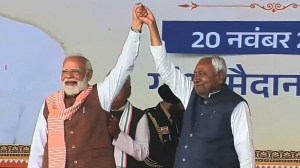Time for tech-enabled interventions in water sector: Sunita Nadhamuni, Chairperson, Arghyam
Arghyam supports sustainable, community-based water management solutions with a goal of providing water security for all.
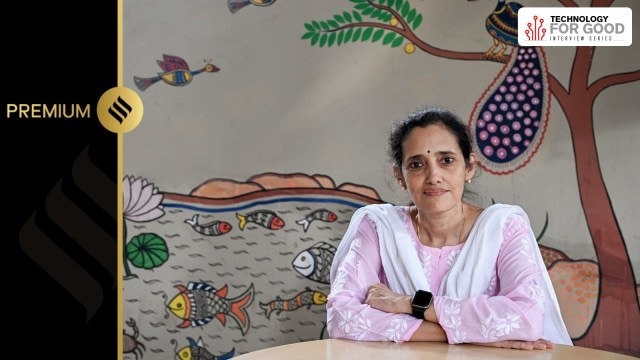 Sunita spoke to indianexpress.com on the opportunities and challenges of using digital tools in enabling water security for communities. (Express photo by Jithendra M)
Sunita spoke to indianexpress.com on the opportunities and challenges of using digital tools in enabling water security for communities. (Express photo by Jithendra M)Sunita Nadhamuni is the chairperson of Arghyam, a public charitable foundation based in Bengaluru.
Arghyam supports sustainable, community-based water management solutions with a goal of providing water security for all. It works with nonprofits and government, and leverages tech in its mission. It takes a data-driven approach to transform India’s water systems. Arghyam has been founded through a personal endowment from Rohini Nilekani.
Arghyam’s vision of safe and sustainable water for all is now being worked on with digital tools for scale and impact. They look to design new platforms and tools to work at scale, using tech as an enabler in providing water security and track availability. Their solutions are community-led as they feel that communities should lead the decision-making process and that the right kind of tech can generate trustworthy data on a real-time basis.
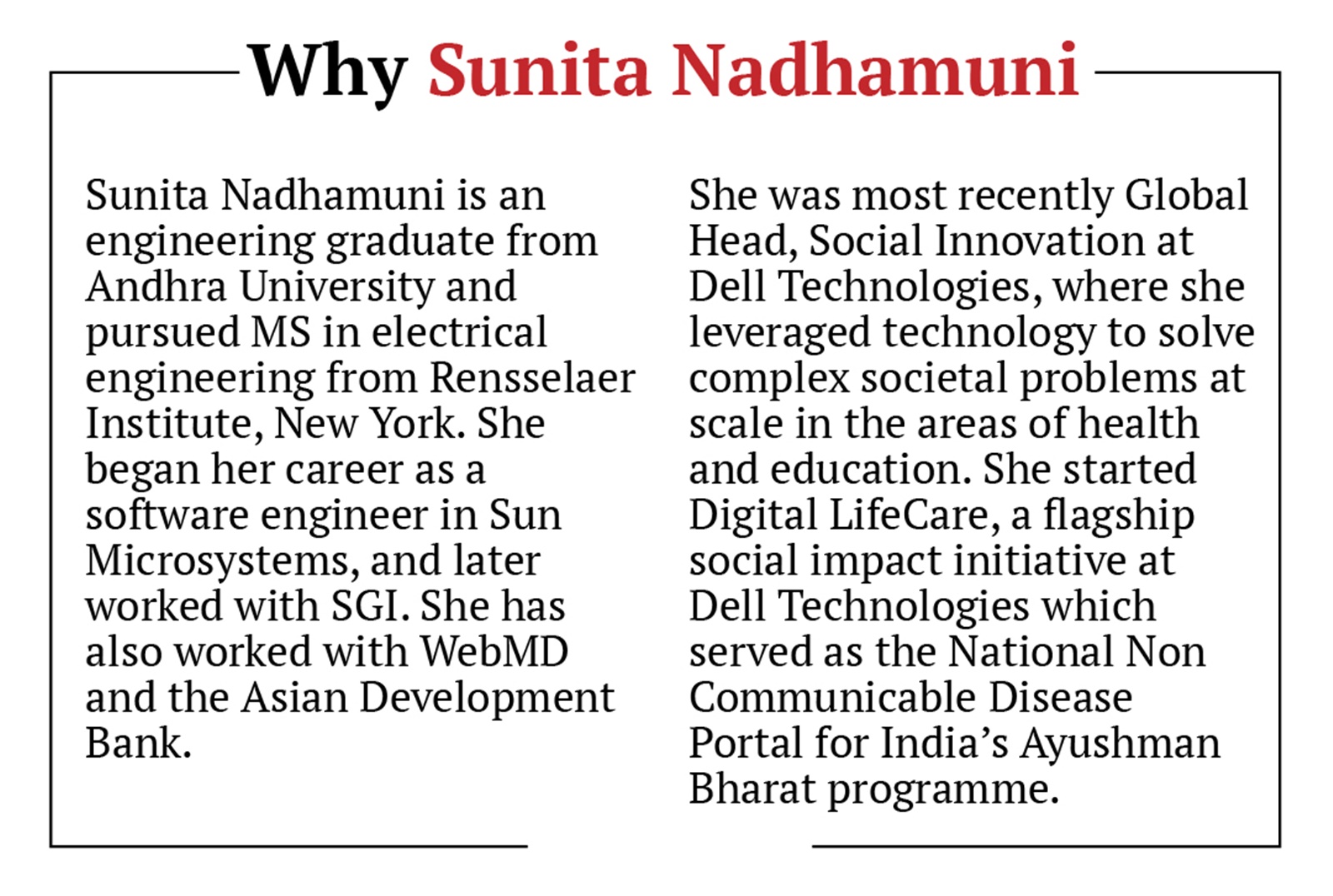 Arghyam has been working with the government as a tech partner for various water-related programmes.
Arghyam has been working with the government as a tech partner for various water-related programmes.
Sunita spoke to indianexpress.com on the opportunities and challenges of using digital tools in enabling water security for communities and on working with governments and partners on helping them put on a tech lens to solve the problem of water availability. Edited excerpts:
Venkatesh Kannaiah: Can you give an overview of the work done by Arghyam Foundation, with an emphasis on tech-based interventions?
Sunita Nadhamuni: Arghyam began in 2004-05 with a focus on domestic water security, that is, provision of water to households in a safe and sustainable manner, taking into account that piped and good quality water was a dream for Indian households at the time. However, our focus was also on building capacities among communities so that they take ownership of their own assets and manage them for their benefit. We have now been around 20 years in this field and have worked on around 140 projects across 22 states.
In our initial phase we were a grant giving organisation. Later, we picked up specific programmatic themes, primarily participatory groundwater management (PGWM) and water quality, funded them, and worked with partners. Most of our work focused on building capabilities of frontline workers, taking knowledge and expertise on hydrogeology, groundwater management and water quality to larger audiences, and ensuring community participation and ownership in water management.
We were the first to start a national water portal (www.indiawaterportal.org) as part of the collaboration we had with the National Knowledge Commission. The goal was to bring easy access and knowledge to a variety of stakeholders on everything related to water. Our role has also been to understand and document the locally available knowledge on traditional water practices and make learning from time-tested solutions from diverse geographies available to all.
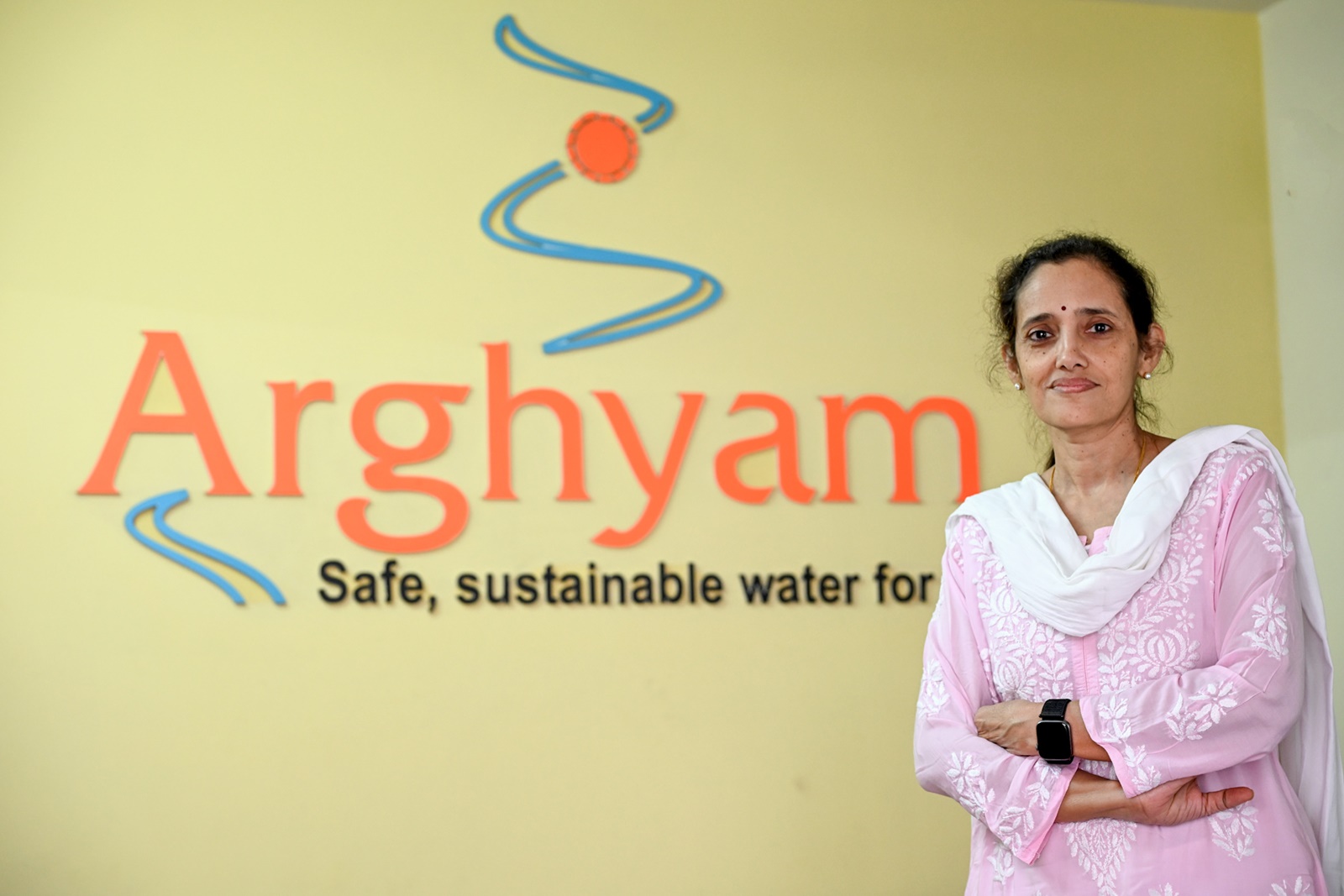 Arghyam’s vision of safe and sustainable water for all is now being worked on with digital tools for scale and impact. (Express photo by Jithendra M)
Arghyam’s vision of safe and sustainable water for all is now being worked on with digital tools for scale and impact. (Express photo by Jithendra M)
Venkatesh Kannaiah: Can you tell us about a few innovations that have emerged out of your various programmes?
Sunita Nadhamuni: We have been working with the government as a tech partner for their various water-related programmes. With the Panchayati Raj department in Karnataka, we have been working with our partners on improving rural water security by focussing on the quality of MGNREGA (Mahatma Gandhi National Rural Employment Guarantee Scheme) plans through scientific planning and community participation.
This intervention used a modeling tool called CLART (Composite Landscape Assessment and Restoration Tool) developed by our partner, Foundation of Ecological Security. CLART enables scientific planning by the technical staff for supply-side interventions for water conservation and natural resource management by engaging with communities. CLART also suggests a set of structures most suitable for that location based on the recharge potential of the soil. The tool was used for planning in around 1600 gram panchayats across eight districts of Karnataka and we found that it was 2.5 times more effective in making scientific- and community-based plans.
Along with our partner, India Natural Resource Economics and Management Foundation (INREM), we have also been working on raising the awareness levels of water quality through online courses. The course has resulted in increasing the number of tests being done at the ground level and also raised awareness on water quality. The course is now being adopted by the Union government’s Jal Jeevan Mission. These courses are available in local languages. The employees of various state governments who work on water-related issues and are connected to respective departments are being provided online guided mentoring on water quality.
In Bihar, we have worked with our partners, Aga Khan Rural Support Programme India (AKRSPI) and Water for People, to integrate three different digital tools for management of piped water supply schemes at the community or ward level. This is now being tested in around 548 odd wards in three blocks in the state. The digital tools provide comprehensive insights into aspects, such as functioning of the scheme, (consistency in water supply and reasons for disruptions during a month), financial status (tariff collection, expenditure), community engagement, including tank cleaning activities, and water quality data, including test results using field test kits. It helps in tracking water supply, maintenance, operations and management. The tech tools have helped community ownership and engagement at the ward level. We have found that 91 per cent of the piped water supply schemes have been functional and are getting water after a long period of time, which is high, given our experience in water-related programmes.
Thus, tech innovations have played a critical role in various phases and processes of programmes — scientific planning (CLART), building capabilities and extending expertise to dispersed audiences with water quality courses, and building transparency and accountability.
Venkatesh Kannaiah: Can you tell us about one or two of your initiatives which you are working on which you think is a very long bet and, if it works out, will create a huge social impact?
Sunita Nadhamuni: We are now the digital public infrastructure (DPI) and Artificial Intelligence partner for the Jal Jeevan Mission to deliver safe water to households. One important fact of Jal Jeevan Mission is that it talks of functional household tap connection. ‘Functional’ is the key here, unlike other government programmes which might be looking at creating assets, and not sure of how it is working on the ground. We are now working on three axes: sustainability of water sources, quality of water supplied, and operation and maintenance of the water supply schemes.
We believe that technology can play a big role in enabling the sustainability of the infrastructure laid under Jal Jeevan Mission. We are not the technology or solution providers or tech implementers in this programme. We want to bring all of the existing solutions together, making them interoperable and opening the system for innovation. This is important as technology solutions tend to be vertically focussed and don’t talk seamlessly to each other. The resulting fragmentation makes it very challenging for the end-user who must use multiple different apps to get their work done. DPI will also enable innovation from the ecosystem by standardising interfaces on common foundational building blocks, thus allowing entrepreneurs to easily build apps for specific use-cases on top of the digital infrastructure.
Across our work, by integrating technology, we have been able to address gaps in access to information, knowledge, and access to expertise, gaps in capabilities of frontline and other functionaries. The idea of DPI will now enable addressing the innovation gap. The next thing for us to explore is the role of AI. Conversational AI, particularly in local languages, can go a long way to increase literacy on water quality and sustainability for frontline workers and the community as well. We are also exploring how AI could help in building insights from large sets of data for policy formulation and decision-making.
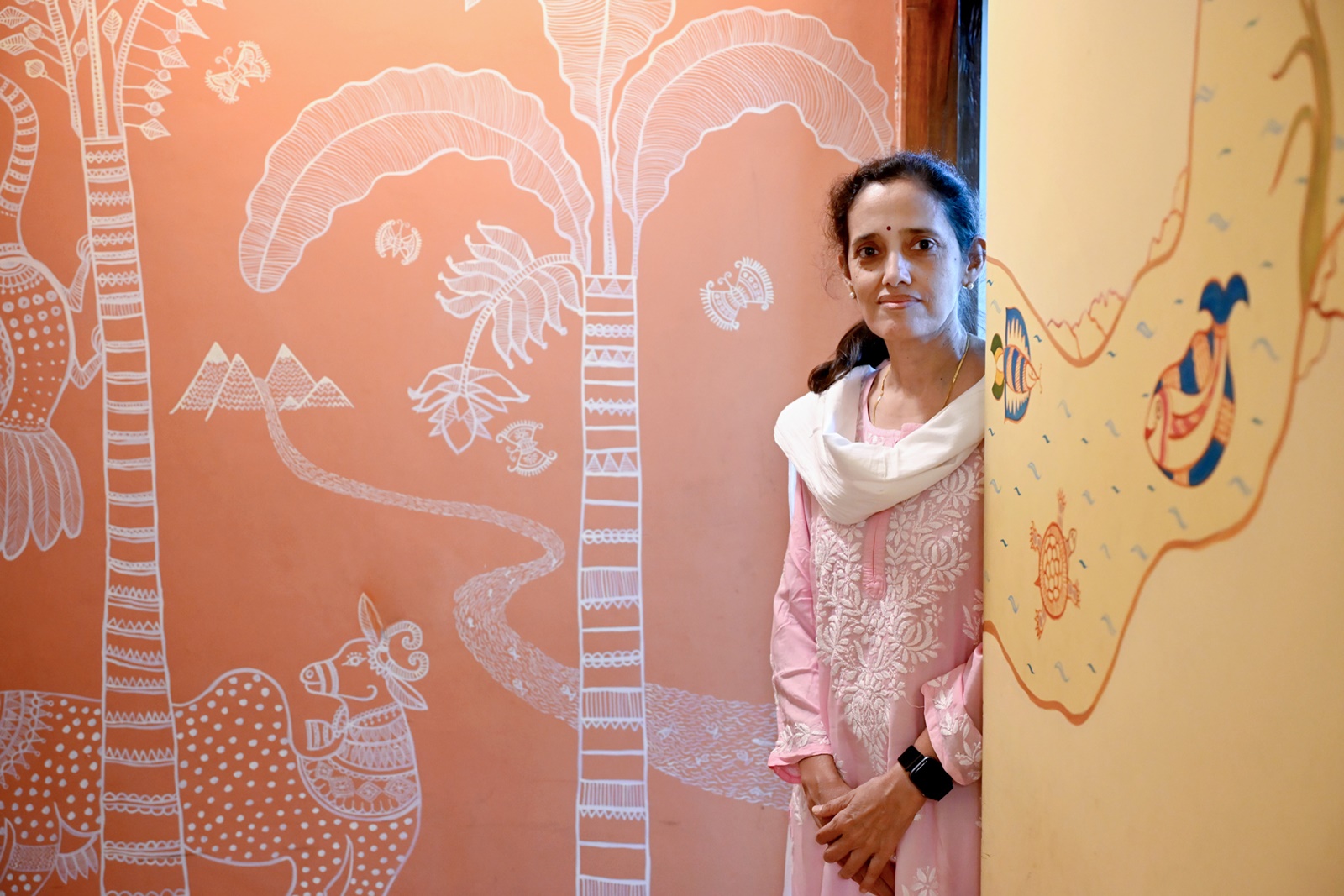 “In the past, we have identified testing of water quality as a problem and supported the development of a low cost water quality testing system,” says Sunita Nadhamuni on Arghyam’s impact on water innovation ecosystem in India. (Express photo by Jithendra M)
“In the past, we have identified testing of water quality as a problem and supported the development of a low cost water quality testing system,” says Sunita Nadhamuni on Arghyam’s impact on water innovation ecosystem in India. (Express photo by Jithendra M)
Venkatesh Kannaiah: What do you think has been your impact on the water innovation ecosystem in India?
Sunita Nadhamuni: Our work has solely been in the water sector and we have been a nodal point for exchange of information, best practices and bringing together various tech stakeholders to look at new solutions. Having a strong network of partners and an ear to the ground, we are able to identify a problem, look at the existing landscape of solutions, and identify and support the application of a solution that seems to have potential at scale. Our impact has been on the water security platforms that we have developed, and the online courses and online tools on water management and distribution. However, all of these have been done with partner organisations and we bring all tech stakeholders together through our funding.
We have funded and provided risk capital to various of these tech interventions and have drawn on our expertise on action research in the field to provide inputs and guidance to tech products in the sector.
In the past, we have identified testing of water quality as a problem and supported the development of a low cost water quality testing system. We have also supported the Nudge Institute’s Water Challenge in 2023, where most of the finalists and prize winners were start-ups with solutions for tracking leakages, removal of water contaminants, etc. Here too, our role was to provide context and mentor the startups.
Venkatesh Kannaiah: What have been your learnings from Arghyam? What next in terms of tech interventions?
Sunita Nadhamuni: We have over a period of time built sufficient expertise and understanding on how to design tech for government programmes and design tech interventions in a constructive and creative manner. We have worked on providing inputs, built solutions for water-related problems, deployed many of these solutions either on a pilot basis or at a workable scale, fine-tuned them based on feedback, and have worked on training of fieldworkers using digital tools. This is an expertise we have built over the last 18 years. In the first phase, we were working on democratising knowledge and information with our India Water Portal, in the last phase we worked on distributing the expertise through capacity building, and in the current phase, we are working on creating a DPI for increasing tech-led innovations in the water sector. My personal experience of having worked with Dell in the social sector has also helped.






